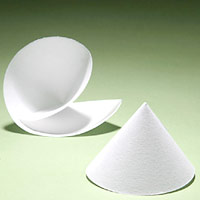Today, we conducted an experiment in by mixing two solutions together in order to form a precipitate. Our objectives were to determine which reactant is the limiting reactant and which is the excess reactant, determine the theoretical mass of the precipitate, and to calculate the percent yield.
First of all, some supplies we needed were the following:
 |
| A Centigram |
 |
| Filter Paper |
So anyways....
We poured 25 mL of the Na2CO3 solution and 25 mL of the CaCl2 solution into the the 250 mL beaker. After obtaining a piece of filter paper, we set up a filtering apparatus! After, we use a wash bottle to wet filter paper in the funnel. Proceeding on with the lab, pour the combined solutions into the filter funnel. Then after ,you wait until the filter process is done. After the filtering, you let the filter paper dry. The process looks something like the picture below
Anyways, on the second day we had to weigh the mass of the dried filter paper in order to come up with conclusions.
By using Stoichiometry we learned a few classes before, we determine which reactant is the excess/ limiting reactant. We also can determine how much precipitate formed by calculating the theoretical mass.
After this we calculate the percent yield. A formula that will help get you the percent yield is the following formula:
Percent yield =
actual mass produced (g) x 100
theoretical mass produced (g)
Our results was that the CaCl2 is the limiting reactant, the excess reactant is the Na2CO3. The theoretical mass is 1.25125 CaCO3 and the percent yield is 85.5% .
Although there is no specific video about this lab, however if you do not understand how to do the calculations, the following videos will be able to help.

Very knowledgeable videos.Precipitation Reactions occur when cations and anions of aqueous solutions combine to form an insoluble ionic solid, called a precipitate. I am learning these concepts for my boards exam.
ReplyDeleteProduct Differentiation